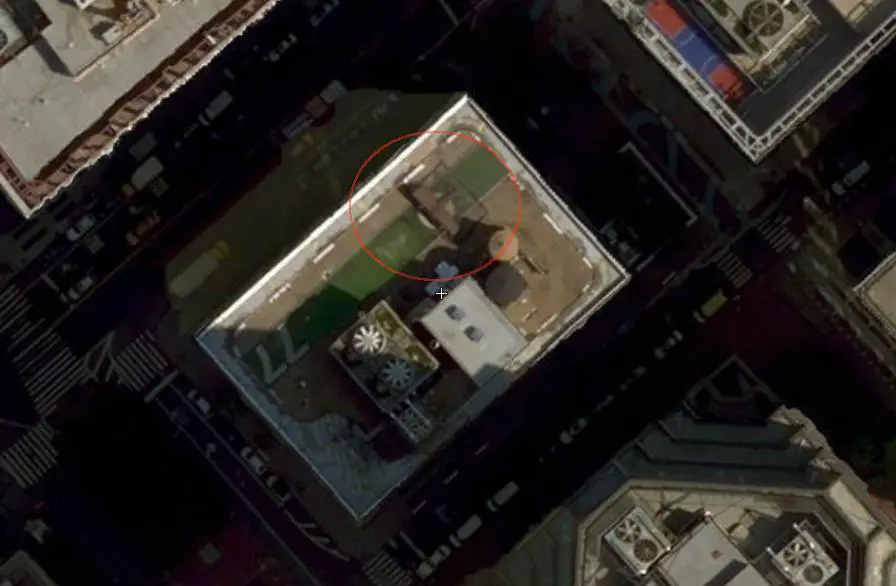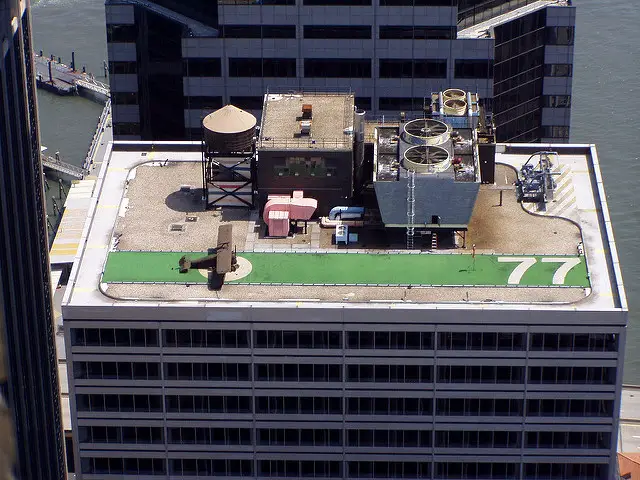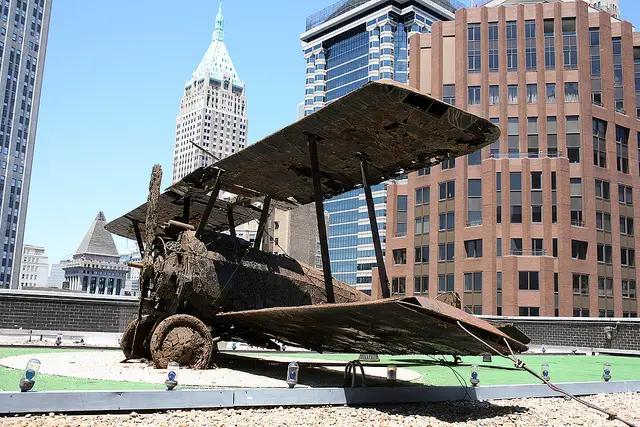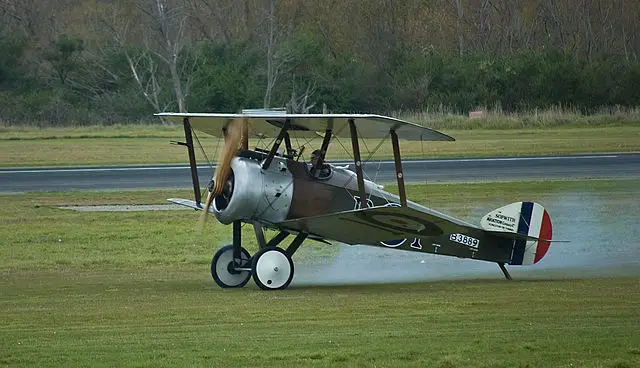The building at 77 Water Street in New York City could be mistaken for just another office tower in the city, but it has something other buildings don’t. A World War I airplane sits on its roof, looking like it’s ready to take off.
It’s not an original World War I airplane but a replica of a 1916 Sopwith Camel. It was designed by Rudolph de Harakmade and erected by William Tarr, a sculptor, while the building was constructed in 1969. It’s been in the same spot after being placed there by a crane when the building opened in 1970.
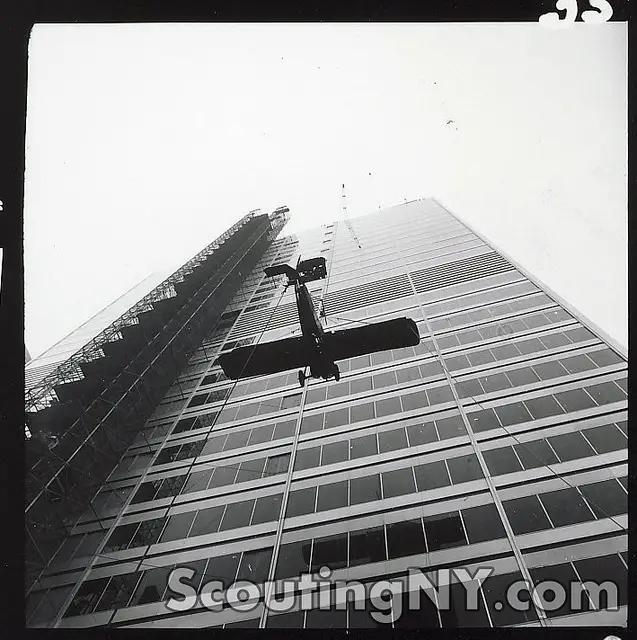
The replica Sopwith Camel sits on its own artificial turf runway complete with landing lights and a windsock. The turf is even emblazoned with a 77 that takes on the appearance of a runway number (even though runway numbers don’t go that high).
The airplane isn’t open to be viewed by the public, and the only people that can get an up-close view are those with access to the roof. The only other way to see the airplane is from neighboring buildings that are taller than the 26-story Water Street building. The main question then is, why? Why put an airplane on the roof of a building that no one can visit?
The reason is pretty simple, according to the president of the company that built the building, Robert Kaufman. He told the Wall Street Journal that they put the airplane on the roof because looking down on the roof of another building is “pretty ugly.” They then came up with the idea of putting an airplane on top of the roof. The people peering out their windows from above probably appreciated that.
But that isn’t the only thing that is interesting about the building. There’s also a fully functioning penny candy shop in the lobby that is a replica of the shops found in the late 1890s to early 1900s. Here are some other great pictures of other fascinating things the lobby of the building holds. You don’t always need to look up to see something interesting. Sometimes you just have to look down. Provided, of course, that you’re looking from a taller building in this case.
The Sopwith Camel – More Facts
Used by the Royal Flying Corps, Royal Naval Air Service, and Royal Air Force
5,490 manufactured by the Sopwith Aviation Company
First Flight on December 22, 1916, Introduced in June 1917, Retired in January 1920
Shot down 1,294 enemy aircraft
Maximum speed — 113 mph
Range — 300 miles
Maximum Altitude (Service Ceiling) — 19,000 feet
Armament — 2 Vickers machine guns
Sources: WSJ, 77waterst.com, ScoutingNY

